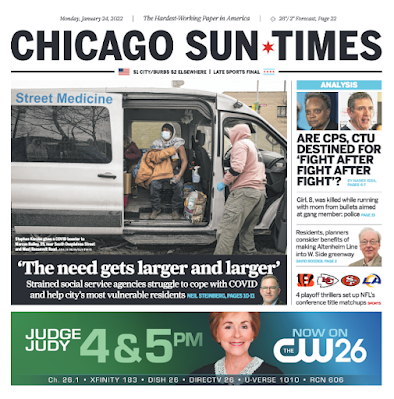Sometimes I give the impression that my mail is one raging septic river of abuse—probably because there is something empowering about sharing a really nasty letter, using the writer's momentum against him, so instead of wounding me, he wounds himself, or would, were he capable of shame, which I can assure you such people are not.
But I also get far more interesting letters from smart, decent people that are valuable for a variety of reasons such as this, reacting to Friday's front page story about candy company closings. Read it and see if you can detect the reason I want to share it:
I was saddened to see another candy plant closing. Not because of our candy capital status, as I honestly was not aware of that. But because of the jobs lost. I am a member of the Chicago Pipefitters Union Local 597. I retired in 2018. Over my 37 years I worked at many candy plants. Brach, Wrigley, Tootsie Roll, the Butterfinger plant by O'Hare, and also the Mars plant. Candy plants were always very good places for a Pipefitter to work. There are miles of pipe needed to manufacture candy. Candy cannot be conveyed through pipe without be heated to its melting point, so a lot of steam or high temp water pipe is needed. A lot of candy is run through “jacketed pipe” which is a small pipe placed inside a larger pipe, with steam running through the “jacket” in between the 2 pipes. The candy runs through the smaller, inside pipe with the steam keeping it in liquid form. Building jacketed pipe, the necessary boiler work, and all of the related piping is good work for a Pipefitter. And a candy plant is a much more pleasant place to walk into in the morning than say a corn plant, a steel mill, or an animal rendering plant. And you smell much better to your family when you walk in the door at night! Sorry to hear another one has closed.
Love your articles!
Tom Mandernach
New Lenox, IL
No, not because I've been to the Pipefitters Union Local 597 training facility in Mokena, and wrote a column about it in 2014. But good memory. What I found very cool are jacketed pipes. A pipe within a pipe. Amazing, right? Even though I'd toured the pipe fitters' facility, jacketed pipes somehow escaped my notice until now. I had to share.











